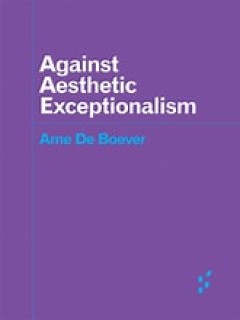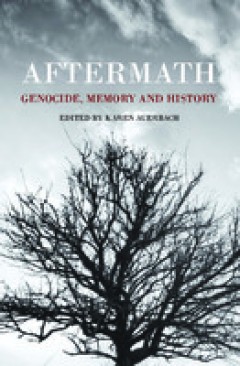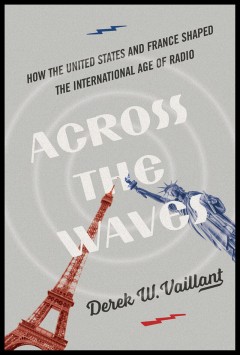Filter by
Advances in Angle-Only Filtering and Tracking in Two and Three Dimensions
Two-dimensional bearing-only filtering (BOF) arises in many real-world tracking problems, including underwater tracking using a passive sonar, aircraft surveillance using a passive radar, navigation of a robot using a passive sonar, and undersea exploration of natural resources using sonar. BOF using a single sensor is also a challenging nonlinear filtering problem due to poor observability and…
- Edition
- -
- ISBN/ISSN
- 9783036568553
- Collation
- 266 hlm; ill., lamp.,
- Series Title
- -
- Call Number
- -

Advances and Trends in Mathematical Modelling, Control and Identification of …
This book introduces novel results on mathematical modelling, parameter identification, and automatic control for a wide range of applications of mechanical, electric, and mechatronic systems, where undesirable oscillations or vibrations are manifested. The six chapters of the book written by experts from international scientific community cover a wide range of interesting research topics relat…
- Edition
- -
- ISBN/ISSN
- 9783036539508
- Collation
- 132 hlm; ill., lamp.,
- Series Title
- -
- Call Number
- -

Against Aesthetic Exceptionalism
Reconsiders exceptionalism between aesthetics and politics Here, Arne De Boever proposes the notion of aesthetic exceptionalism to describe the widespread belief that art and artists are exceptional. Against Aesthetic Exceptionalism challenges that belief by focusing on the sovereign artist as genius, as well as the original artwork as the foundation of the art market. Engaging with sculpture, …
- Edition
- -
- ISBN/ISSN
- 9781452962450
- Collation
- 2019
- Series Title
- Forerunners: Ideas First
- Call Number
- -

Aftermath
Aftermath: Genocide, Memory and History examines how genocide is remembered and represented in both popular and scholarly memory, integrating scholarship on the Holocaust with the study of other genocides through a comparative framework. Scholars from a range of disciplines re-evaluate narratives of past conflict to explore how memory of genocide is mobilised in the aftermath, tracing the devel…
- Edition
- -
- ISBN/ISSN
- -
- Collation
- -
- Series Title
- History
- Call Number
- -

Afterlives of war
Afterlives of war documents the lives and historical pursuits of the generations who grew up in Australia, Britain and Germany after the First World War. Although they were not direct witnesses to the conflict, they experienced its effects from their earliest years. Based on ninety oral history interviews and observation during the First World War Centenary, this pioneering study reveals the co…
- Edition
- -
- ISBN/ISSN
- -
- Collation
- -
- Series Title
- -
- Call Number
- -

Afterlives of the Garden
The collection of essays in this volume offers fresh insights into varied modalities of reception of Epicurean thought among Roman authors of the late Republican and Imperial eras. Its generic purview encompasses prose as well as poetic texts by both minor and major writers in the Latin literary canon, including the anonymous poems, Ciris and Aetna, and an elegy from the Tibullan corpus by the …
- Edition
- Sergio Yona
- ISBN/ISSN
- 9783111029733
- Collation
- 190
- Series Title
- CICERO
- Call Number
- -

Activist New York
Follows centuries of New York activism to reveal the city as a globally influential machine for social change Activist New York surveys New York City’s long history of social activism from the 1650’s to the 2010’s. Bringing these passionate histories alive, Activist New York is a visual exploration of these movements, serving as a companion book to the highly-praised Museum of the City of…
- Edition
- -
- ISBN/ISSN
- 9781479828654
- Collation
- oer.unej.ac.id
- Series Title
- -
- Call Number
- -

After the Siege
Drawing on extensive primary sources, including ward tax assessors' Taking Books, church records, census records, birth and marriage records, newspaper accounts, and town directories, Jacqueline Barbara Carr brings to life Boston's remarkable rebirth as a flourishing cosmopolitan city at the dawn of the nineteenth century. She examines this watershed period in the city's social and cultural his…
- Edition
- -
- ISBN/ISSN
- 9781555538743
- Collation
- 338
- Series Title
- -
- Call Number
- -

Across the Waves
In 1931, the United States and France embarked on a broadcasting partnership built around radio. Over time, the transatlantic sonic alliance came to personify and to shape American-French relations in an era of increased global media production and distribution. Drawing on a broad range of American and French archives, Derek Vaillant joins textual and aural materials with original data analytic…
- Edition
- -
- ISBN/ISSN
- 9780252050015
- Collation
- oer.unej.ac.id
- Series Title
- -
- Call Number
- -

Across the Oceans: Development of the overseas business information transmission
"In the early 19th century, the only way to transmit information was to send letters across the oceans by sailing ships or across land by horse and coach. Growing world trade created a need and technological development introduced options to improve general information transmission. Starting in the 1830s, a network of steamships, railways, canals and telegraphs was gradually built to connect di…
- Edition
- -
- ISBN/ISSN
- 9789522228093
- Collation
- oer.unej.ac.id
- Series Title
- -
- Call Number
- -
 Computer Science, Information & General Works
Computer Science, Information & General Works  Philosophy & Psychology
Philosophy & Psychology  Religion
Religion  Social Sciences
Social Sciences  Language
Language  Pure Science
Pure Science  Applied Sciences
Applied Sciences  Art & Recreation
Art & Recreation  Literature
Literature  History & Geography
History & Geography